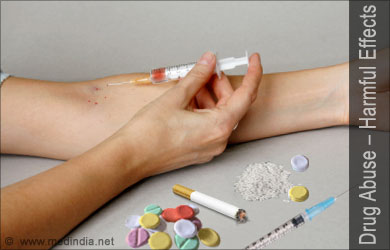Finding Help For Sex addiction Victims
Sex addiction and how to find help
What is sex addiction?
 Sex addiction or ‘hyper sexuality disorder’ as some experts refer to it, is a subject that has elicited a lot of debate in the recent times. Arguments about the issue have not only been confined to medical journals and publications but have also found their way to popular media. In general, the big question about the issue has been whether or not it is actually a form of disorder and if so, what kind of treatment should be used on individuals who have been diagnosed with it. Of course there are many other questions with regard to how the diagnosis can be done and other related issues, but what is clear is the fact that there are millions of individuals who report that they are affected by this condition and are in need of help. Since such individual do seek help, get it and end up reporting overall improvements in their lives, it can be said that indeed sexual addition is a disorder that affects many people in the world today. The good news is that there are specific methods that can be used to handle it.
Sex addiction or ‘hyper sexuality disorder’ as some experts refer to it, is a subject that has elicited a lot of debate in the recent times. Arguments about the issue have not only been confined to medical journals and publications but have also found their way to popular media. In general, the big question about the issue has been whether or not it is actually a form of disorder and if so, what kind of treatment should be used on individuals who have been diagnosed with it. Of course there are many other questions with regard to how the diagnosis can be done and other related issues, but what is clear is the fact that there are millions of individuals who report that they are affected by this condition and are in need of help. Since such individual do seek help, get it and end up reporting overall improvements in their lives, it can be said that indeed sexual addition is a disorder that affects many people in the world today. The good news is that there are specific methods that can be used to handle it.
It is not easy for one to diagnose themselves as having this problem. In most cases, individuals who show the clearest signs of sexual addition tend to deny that they are affected. Some even go to the extent of denying the very existence of such a problem in the first place. This is not an issue to worry about since as it is known, sexual addiction is actually a type of obsessive compulsive disorder. Its manner of operation makes it very difficult, if not completely impossible, for an infected person to point it out. However, when you generally find it impossible to control your sexual drive to such extent that daily life activities are interfered with, chances are that you are in need of help. On most occasions, affected individuals are so consumed with sexual acts to the extent that they engage in what can be described as risky sexual behaviors. Such behaviors are done with total disregard for the social, economic and even health risks that are associated with them. This may be evident in excessive sexual stimulation, obsession with sexual imagery and one having an unusually high number of sexual affairs.
There is still an important aspect to this condition. Although sexual addiction is seen as a disorder in itself, the role that other emotional sates such as anxiety, depression and other forms of emotional disturbances play in its development cannot be ruled out. What this means is that many individuals who are affected by this disorder usually have experience feelings of loneliness, the desire to experiment with new things and general emotional difficulties. These feelings precede excessive sexual fantasies which culminate to actual hyper sexuality disorder.
How can Sex Addiction be treated?
There are different forms of treatment that have been developed to help individuals caught up in this form of addition overcome it. Unlike the past, increase in knowledge, development of new therapies and increased awareness has made it relatively easy and fast for one to have access to any form of treatment desired. Here is a brief overview of some of the methods and how to access them.
The first common method of treating sexual addiction entails use of psychotherapeutic techniques to help one break the thought patterns that are known to trigger such kind of behavior. The idea behind this form of treatment is that sexual addition, like many other forms of addiction, has a basis in the psychological processes of the individual. Therefore, if an individual is able to recognize what these thought patterns are, what triggers them and how they lead to the compulsive disorder, it will actually be possible to control them. For this process to be effective, you first have to get a properly qualified therapist. Working with such a specialist, you will have a chance to map your past life. It is through this process that specific experiences in the past that give rise to the current thought patterns will be identified, special methods of dealing with them developed and a sound plan of how to go about it adopted.
 Another common form of treatment for sexual addiction that is gaining currency in the current times entails counseling sessions. This may take many different formats. For instance, family counseling sessions may be effectively used for families that one of the members is affected. This form of counseling is effective in that it helps not only the individual who is affected but also those other members of the family who may not be having the disorder but are affected by it by virtue of being family to the affected individual.
Another common form of treatment for sexual addiction that is gaining currency in the current times entails counseling sessions. This may take many different formats. For instance, family counseling sessions may be effectively used for families that one of the members is affected. This form of counseling is effective in that it helps not only the individual who is affected but also those other members of the family who may not be having the disorder but are affected by it by virtue of being family to the affected individual.
Further, many individuals who are affected by this disorder find it useful to use group counseling as a form of therapy. The popularity of seeking group counseling for dealing with difficult conditions is not confined to sexual addition. From addiction to alcohol, drugs and other forms of socially undesirable behaviors, group counseling sessions have been used quite effectively to help affected individuals. There are several reasons for this trend. The most common one is the anonymity that one is usually accorded when joining such a group. The second one is the friendly atmosphere that is usually created during such group counseling sessions. Since all the members have gone through similar experiences, it becomes easy for one to open up and share past experiences, present challenges and future aspirations within such an environment.
Lastly, the good thing about such support groups is that occasionally, expert help from doctors and other professionals is provided. This, which may be in the form of medication or other intervention measures, boosts the overall chances of one completely breaking free from the addiction.
Sex addiction and how to find help
Related articles







 Alcohol dependence is also known as alcoholism and it occurs when one
Alcohol dependence is also known as alcoholism and it occurs when one  Medications can also help in preventing seizures before they start. Benzodiazepines are the recommended drugs for people undergoing withdrawal of alcohol. They inhibit nerve cell excitability which deals with the overstimulation resulting from the brain as a result of alcohol effects. Examples include halazepam and lorazepam. Alcohol withdrawal symptoms can begin from as early as two hours after the last drink and can persist for up to weeks. The effects range from shaking to delirium tremens. Clinical management of alcohol withdrawal is to minimize the severity of symptoms and facilitate an entry into a treatment program.
Medications can also help in preventing seizures before they start. Benzodiazepines are the recommended drugs for people undergoing withdrawal of alcohol. They inhibit nerve cell excitability which deals with the overstimulation resulting from the brain as a result of alcohol effects. Examples include halazepam and lorazepam. Alcohol withdrawal symptoms can begin from as early as two hours after the last drink and can persist for up to weeks. The effects range from shaking to delirium tremens. Clinical management of alcohol withdrawal is to minimize the severity of symptoms and facilitate an entry into a treatment program.





 Neurobiology is basically referred as the branch of biology that deals with the anatomy, physiology and pathology of the nervous system. From these basic definition we can define neurobiological factors as those factors that relate to the anatomy, physiology and pathology of the nervous system.
Neurobiology is basically referred as the branch of biology that deals with the anatomy, physiology and pathology of the nervous system. From these basic definition we can define neurobiological factors as those factors that relate to the anatomy, physiology and pathology of the nervous system.










 NY offers free training on opioid overdose prevention
NY offers free training on opioid overdose prevention





